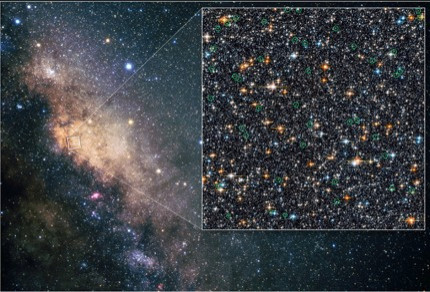Stars Steal the Shine from Celestial Companions

Would a star be able to look brighter and newer by sucking some of the glitter from a nearby star? Apparently so, and scientists believe they have found an explanation how the trick is done.
Stars known as blue stragglers, which are old but look much brighter and thereby younger, maintain their newer appearance by taking away the outer layer of a nearby companion star in a process much like a vacuum cleaner known as mass transfer, scientists from the University of Wisconsin- Madison and Northwestern University concluded Thursday in a study.
This makes the blue straggler look new, while its victim is left as a white dwarf, akin to a used up star.
People have been trying to explain the origin of blue stragglers since their discovery in 1953, and now we have the detailed observations needed to identify how they were created, lead author and Northwestern University astronomer Aaron Geller said in a statement.
Geller and his colleagues studied blue stragglers located in a star cluster in the constellation Cepheus.
Two other theories for how blue stragglers keep up a younger appearance are star collisions and star mergers, according to a statement on the study.
It's really the companion star that helped us determine where the blue straggler comes from, Geller said in a statement. The companion stars orbit at periods of about 1,000 days, and we have evidence that the companions are white dwarfs. Both point directly to an origin from mass transfer.
Research was published in the journal Nature.
© Copyright IBTimes 2024. All rights reserved.





















